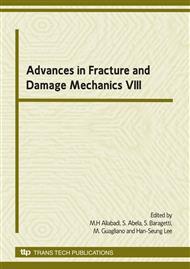p.681
p.685
p.689
p.693
p.697
p.701
p.705
p.709
p.713
Effects of Recycled Coarse Aggregates on the Carbonation Evolution of Concrete
Abstract:
Concrete exposing to atmosphere suffers from changes in its internal structure, for instance loss of alkalinity of the cover concrete and corrosion of steel rebar due to carbonation, which in extreme cases affect the safety, the reliability and the durability or the service life of the structure. Carbonation is one of the key environmental actions that may cause structural failure. This study aims to gain some new information on the carbonation resistance when recycled coarse aggregates are used to mix new concrete. The concrete’s resistance to carbonation is determined by measuring the carbonation depth of 100mm×100mm×300mm concrete prisms in according to GBJ 82-85. Two series of tests including 9 groups of recycled aggregate concrete specimens are carried out, in which the effects of the quality and replacement of recycled coarse aggregates on the carbonation behavior of recycled concrete are evaluated. The essential test results are presented and discussed in this paper. Based on the findings of the present study, in order to reduce the unfavorable effects of recycled coarse aggregates on the recycled concrete, limiting the compressive strength grade of original concrete and the replacement of recycled coarse aggregate is a good option under the condition of using recycled concrete in considered projects.
Info:
Periodical:
Pages:
697-700
Citation:
Online since:
October 2009
Authors:
Keywords:
Price:
Сopyright:
© 2010 Trans Tech Publications Ltd. All Rights Reserved
Share:
Citation:


